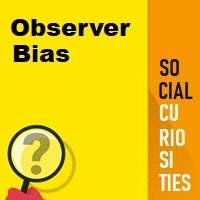
What Is Observer Bias?
Observer bias is defined as a researcher’s expectation about their research study. To be more precise, it is a type of bias that occurs when the person has personal judgement or perspective that affects their ability to reach or discuss an impartial conclusion.
The bias is a problem in research studies wherein the information collected is affected by the fact that the researcher has expectations about what is going to happen. For example, if a researcher is trying to find out a particular result, and have an incentive to produce data that confirms predication.
This type of bias can result in misleading information. Moreover, it can affect the data collection and the acquired results can fail to accurately represent what exists in reality because the results were interpreted under researcher’s bias and prejudice.
In fact, this type of bias not only leads to inaccurate data sets, but also can be damaging to scientific research and policy decisions. Additionally, the presence of bias in your study can cause negative outcomes for people involved in the research study. Furthermore, it can lead to misinterpretation of their behavior and biased treatment from the researchers.
This is an example
We have chosen a rule that some sequences of three numbers obey and others do not. Your job is to guess what the rule is.
We will start by telling you that the sequence 2, 4, 8 satisfies the rule. And we give you one more clue, the sequence 5, 10, 20 also fulfills the rule.
Now it’s your time, take some time to provide other sequences and try to guess the rule!
Once you’ve tried it, continue reading.
How was the process? Were you willing to look for answers that confirmed your guesses? It is very likely that your created sequences follow the logic of multiplying the numbers by 2.
However, it is not the correct rule, the solution is much simpler: the rule for the sequence is that the next number is greater than the previous one. Therefore, 6, 23, 45 satisfies the rule as well as 5, 6, 19.
This is a simple but powerful test to challenge confirmation bias.


